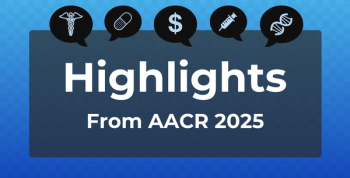
Patients With T2D, CAP Require Greater Daytime Oversight
Data from continuous glucose monitors were used to measure glycemic variability among patients with type 2 diabetes (T2D) and community-acquired pneumonia (CAP) hospitalized in Denmark between February and June 2021.
Between daytime and nighttime data on glycemic variability (GV) gleaned from the
The risk was especially elevated in the absence of glucocorticoid (GC) treatment.
“GV has only been sparsely studied in patients with CAP,” the authors wrote. “This study aimed to quantify in-hospital GV in CAP patients.”
The study,
The 40 patients in their analysis (mean age, 74 [range, 55-91] years) were stratified into 4 groups (n = 10 in each group). All had CAP, did or did not have T2D, and did or did not receive treatment with GC during hospitalization between February and June 2021 at Copenhagen University Hospital:
- Group 1: CAP
- Group 2: CAP and GC treatment
- Group 3: CAP and T2D
- Group 4: CAP, GC treatment, and T2D
For the daytime, the SD for patients with T2D and no GC treatment increased by 1.93 (95% CI, 1.40-2.66) compared with patients who did not have T2D and did not receive the treatment (P < .001). In addition, the SD rose by 1.42 (95% CI, 1.04-1.97) among those without T2D who received GC treatment (P = .031). Nighttime, in comparison, saw an SD increase of 2.29 (95% CI, 1.38-3.81) among patients with T2D and no GC treatment vs patients who did not have T2D and did not receive the treatment (P < .01).
When considering CVs, there was an increase of 8.1 (95% CI, 1.0-15.2) percentage points during the nighttime hours vs 5.1 (95% CI, 0.0-10.1) percentage points during the daytime for patients with T2D who were not treated with GCs (P = .046) vs those with neither T2D or GC treatment (P = .026).
Interactions were not seen between GC treatment and T2D on SD for day (P = .717) or night hours (P = .790), nor between T2D and GC treatment on CV for daytime (P = .805) or nighttime (P = .444).
In addition, while GC treatment was not shown to have a significant effect on change in PPGE at all meals, there was an interaction seen among those with T2D treated with GCs. Their postprandial glucose increased 2.5 (95% CI, 0.7-4.3) mmol/L (45 [95% CI, 13-77] mg/dL) at lunchtime vs those with neither T2D nor GC treatment (P = .018).
All of the patients were matched by age and gender and their hemoglobin A1C was measured to confirm diabetes diagnosis. Daytime hours were 7 am to 10:59.59 pm, and nighttime hours were 11 pm to 6:59.59 am.
The authors noted that randomized controlled trials are needed that compare normoglycemia and hyperglycemia among patients with CAP, and they highlight that their findings echo previous recommendations of screening for glucocorticoid-induced hyperglycemia (GIH) up to 2 hours after lunchtime, “with standard POC capillary blood glucose testing when prednisolone is administered in the morning.”
These patients, they reiterated, require intense clinical oversight because their CAP recovery can be hindered by their greater risk of GV.
“Our results support that high GV is positively associated with a longer length of stay at the hospital,” they concluded, and “provide real-world evidence for the clinical experience that a screening procedure for GIH should be done after lunch.”
Reference
Olsen MT, Dungu AM, Klarskov CK, Jensen AK, Lindegaard B, Kristensen PL. Glycemic variability assessed by continuous glucose monitoring in hospitalized patients with community-acquired pneumonia. BMC Pulm Med. Published online March 9, 2022. doi:10.1186/s12890-022-01874-7
Newsletter
Stay ahead of policy, cost, and value—subscribe to AJMC for expert insights at the intersection of clinical care and health economics.









































